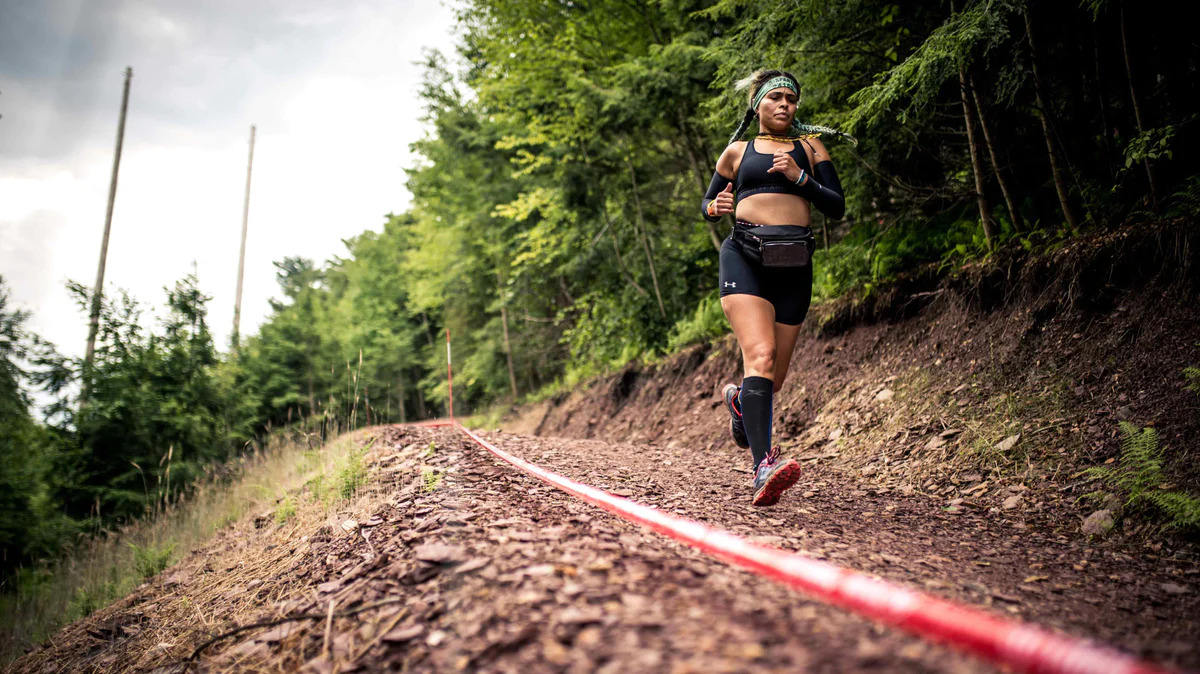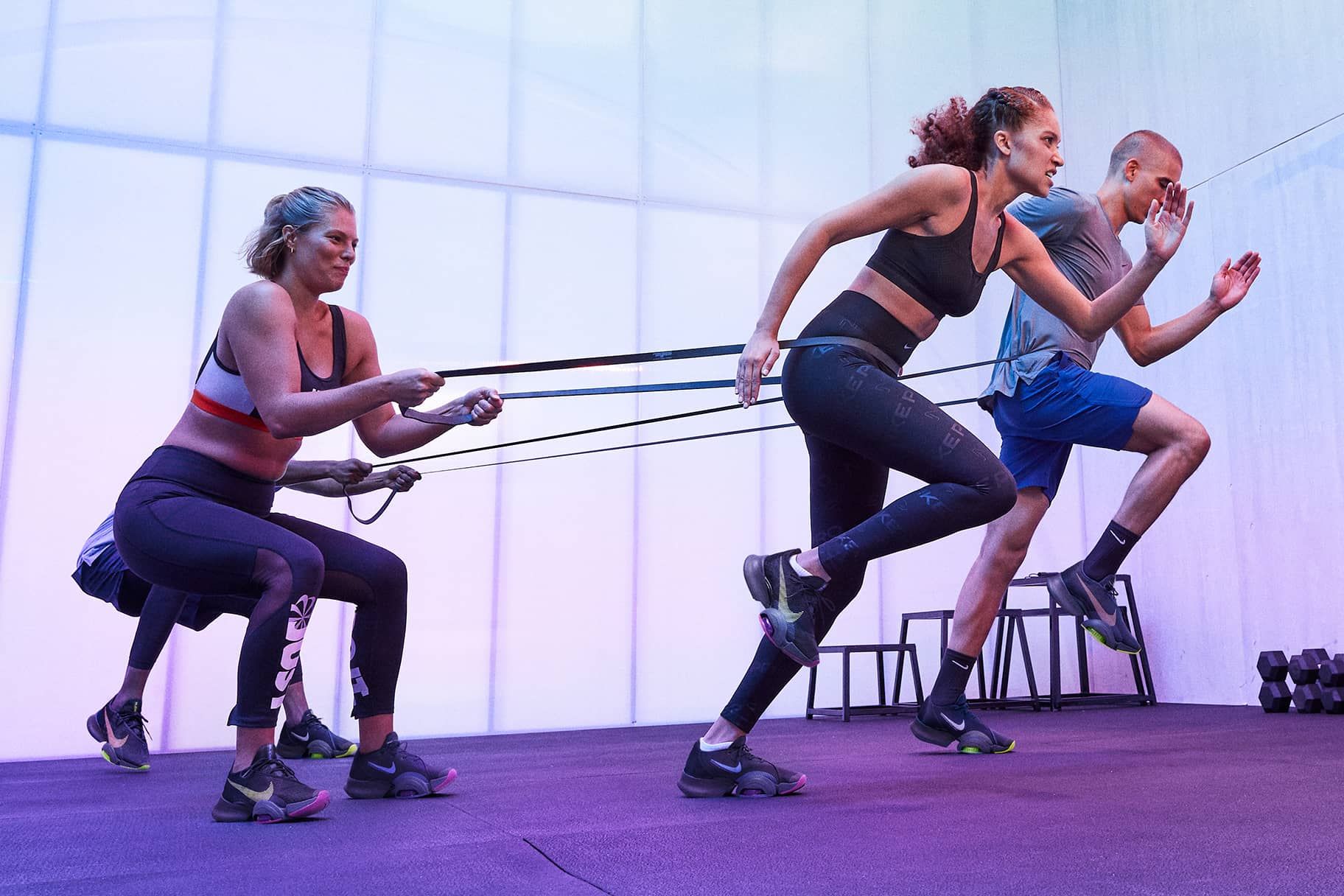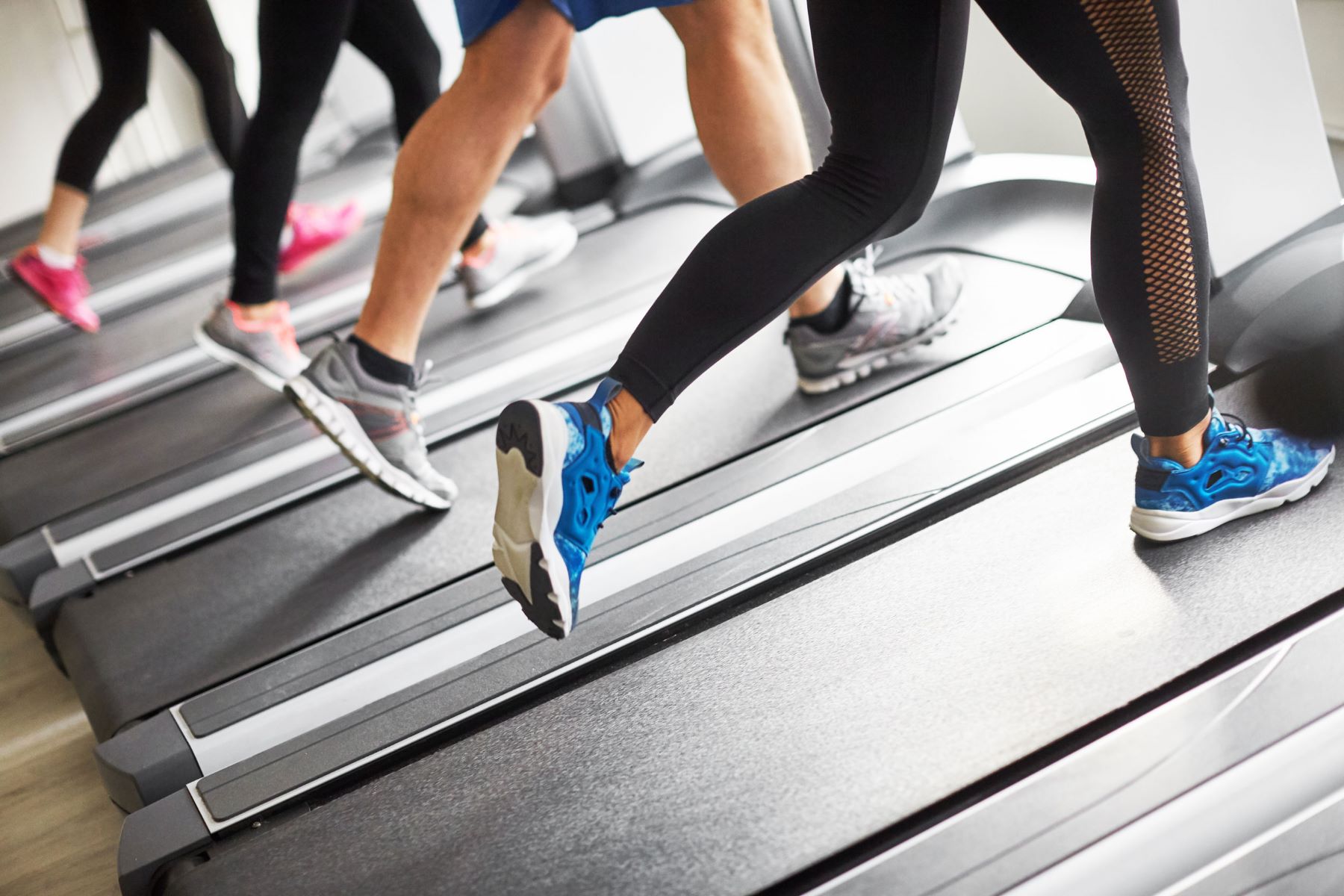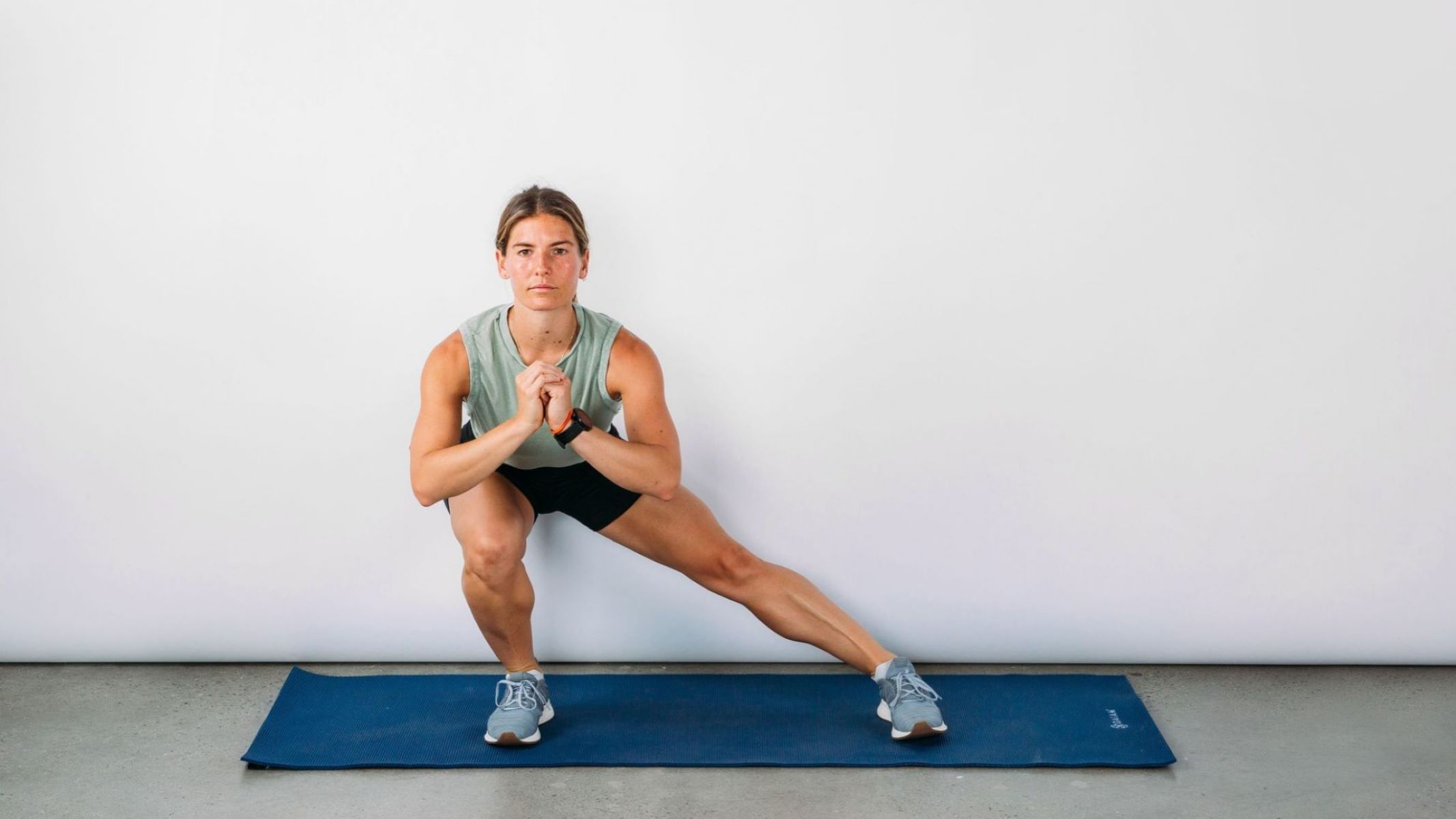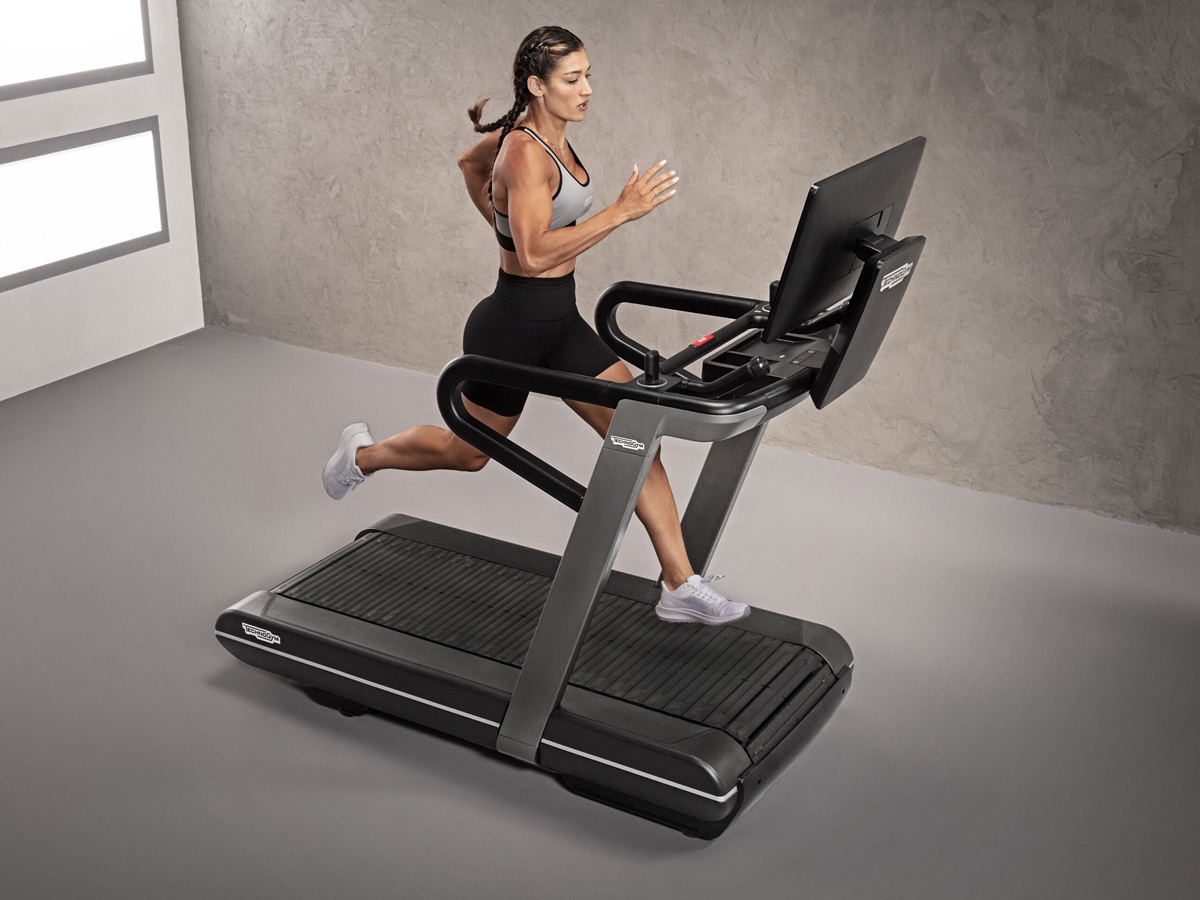Home>Misc>Featured>How To Energize Your Lungs And Legs Before Long Distance Running
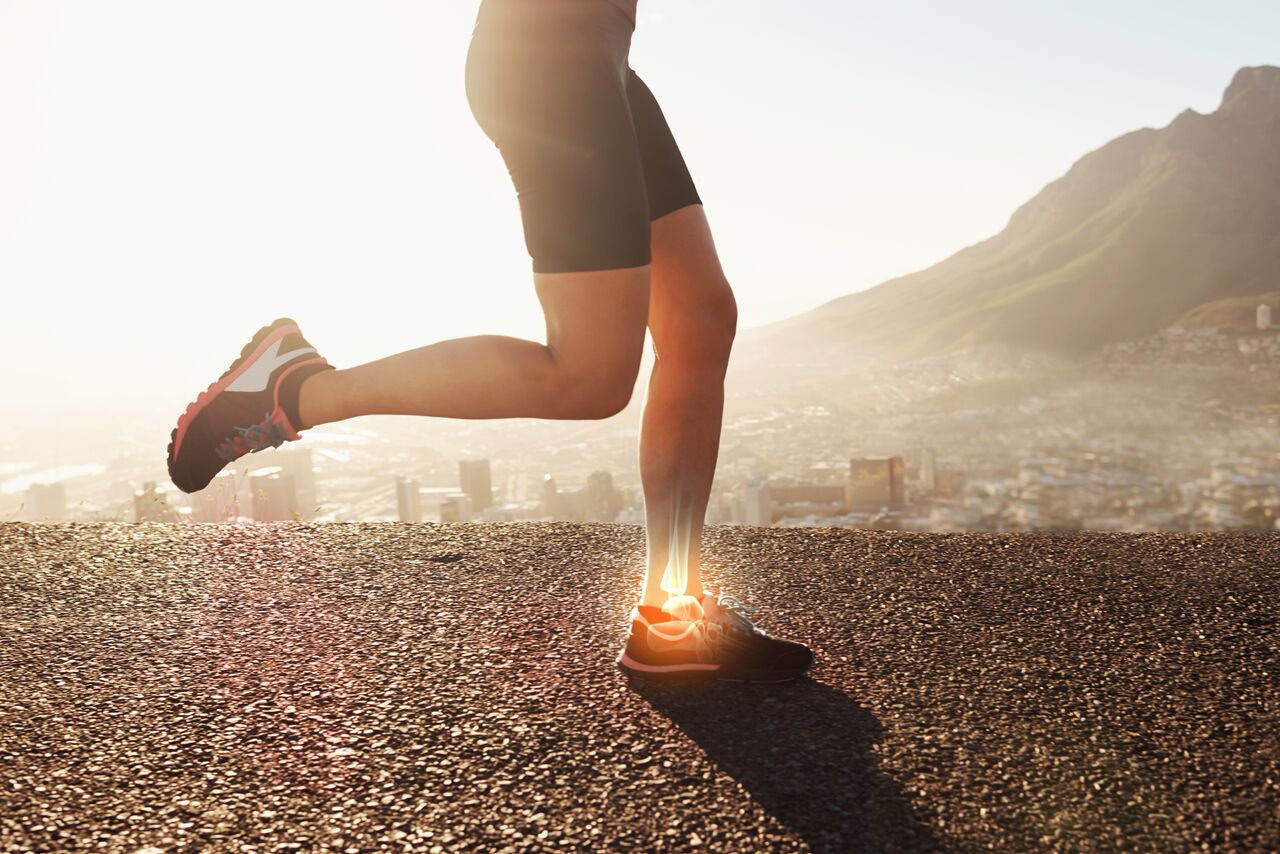

Featured
How To Energize Your Lungs And Legs Before Long Distance Running
Modified: August 22, 2023
Get vital tips on how to energize your lungs and legs before long distance running with our featured guide! Achieve peak performance today.
Introduction
Long distance running is a demanding physical activity that requires endurance, strength, and proper preparation. To perform at your best and prevent injuries, it is crucial to energize your lungs and legs before embarking on a long distance run. By engaging in specific warm-up exercises, you can enhance your lung capacity, increase blood flow to your legs, and optimize your overall performance.
When you warm up your lungs and legs before a long distance run, you are preparing your body for the physical demands it will face during the activity. This warm-up routine helps loosen your muscles, increases your heart rate gradually, and improves your range of motion. Additionally, it activates your respiratory system, ensuring that your lungs are ready to deliver sufficient oxygen to your muscles as you run.
Properly warming up your lungs and legs before a long distance run not only enhances your performance but also helps prevent injuries. By engaging in specific warm-up exercises, you can minimize the risk of muscle strains, cramps, and other common running-related injuries. Additionally, warming up prepares your body for the intense physical activity, reducing the chances of experiencing fatigue or exhaustion during the run.
In the following sections, we will highlight a variety of effective warm-up exercises specifically targeting the lungs and legs. These exercises will help you energize your respiratory system and activate the muscles in your legs for optimal performance. Incorporating these exercises into your pre-run routine will not only invigorate your body but also set the foundation for a successful long distance run.
Importance of Energizing Lungs and Legs
Energizing your lungs and legs before a long distance run is of utmost importance to ensure a successful and injury-free experience. Let’s take a closer look at why focusing on these areas is essential.
1. Improved Lung Capacity: Long distance running requires a consistent and adequate supply of oxygen to your working muscles. By engaging in specific warm-up exercises that target your lungs, you can increase your lung capacity, allowing you to take in more oxygen with each breath. This enhanced lung function will not only improve your running endurance but also maximize your overall performance.
2. Increased Blood Flow to the Legs: Running long distances puts a significant strain on your leg muscles. Warming up your legs before a run helps increase blood flow to these muscles, delivering essential nutrients and oxygen. This increased blood circulation prepares your muscles for the upcoming physical exertion, reducing the risk of cramps and muscle strains.
3. Enhanced Muscle Activation: Engaging in specific leg warm-up exercises activates the target muscles and primes them for the intense activity to come. By activating these muscles, you can improve your running efficiency and prevent imbalances or compensations that can lead to injuries. Proper muscle activation ensures that your muscles are firing optimally, allowing for a smoother and more controlled running motion.
4. Injury Prevention: Warming up your lungs and legs before a long distance run significantly reduces the risk of injuries. By increasing blood flow, activating muscles, and improving range of motion, you can minimize the chance of strains, sprains, and other running-related injuries. Taking the time to properly warm up can make a substantial difference in your ability to run pain-free and with confidence.
5. Mental Preparation: Preparing your lungs and legs before a long distance run not only has physical benefits but also helps get you in the right mindset. It allows you to focus, mentally prepare, and build confidence in your ability to tackle the upcoming challenge. A well-energized body generates a positive mindset and sets the foundation for a successful running experience.
By recognizing the importance of energizing your lungs and legs before a long distance run, you are taking proactive steps toward optimizing your running performance and reducing the risk of injuries. With this understanding, let’s explore some effective warm-up exercises that specifically target these areas.
Pre-run Warm-up Exercises
Before you hit the pavement for your long distance run, it’s essential to engage in a series of warm-up exercises to prepare your lungs and legs for the upcoming physical activity. These exercises will help increase blood flow, improve flexibility, and activate the target muscles. Here are some effective pre-run warm-up exercises:
- Deep Breathing Exercises: Begin by taking slow, deep breaths in through your nose, filling your lungs with air. Then exhale slowly through your mouth, ensuring complete release of air. Repeat this deep breathing exercise for a few minutes to fully oxygenate your lungs and prepare them for increased demand.
- Leg Stretches: Stand upright and take a step forward with your right foot. Bend your right knee and lunge forward, keeping your left leg straight. Hold the stretch for 15-20 seconds and then switch legs. Repeat the stretch on each leg 2-3 times to improve flexibility in your hamstrings and quads.
- Dynamic Lunges: Take a big step forward with your right foot and lower your body into a lunge position. As you push back up, switch legs and lunge forward with your left foot. Continue alternating between right and left lunges for about 10 repetitions to activate your leg muscles and increase mobility.
- High Knees: Stand with your feet hip-width apart and lift your right knee as high as possible while hopping on your left foot. Alternate by lifting your left knee while hopping on your right foot. Perform this exercise for about 30 seconds, aiming to bring your knees up to waist level. High knees help warm up your leg muscles and improve coordination.
- Butt Kicks: Stand with your feet hip-width apart and jog in place while actively trying to kick your heels up towards your glutes. Continue this exercise for about 30 seconds, focusing on engaging your hamstrings. Butt kicks help to warm up and activate the muscles in the back of your legs.
- Jumping Jacks: Start with your feet together and arms at your sides. Jump while simultaneously spreading your legs apart and bringing your hands overhead. Jump again to return to the starting position. Repeat this motion for about 30 seconds to elevate your heart rate and engage your legs, arms, and core muscles.
- Mountain Climbers: Begin in a plank position with your shoulders directly over your wrists. Bring your right knee toward your chest and then quickly switch legs, bringing your left knee in and extending your right leg back. Continue alternating the “running” motion with your knees for about 30 seconds, engaging your core and activating your leg muscles.
- Leg Swings: Stand next to a wall or support and hold onto it for balance. Swing your right leg forward and backward in a controlled manner, gradually increasing the range of motion. Perform 10 swings with your right leg and then switch to your left leg. Leg swings help to activate your hip and leg muscles while improving flexibility.
To fully benefit from these warm-up exercises, aim to perform them for about 10-15 minutes before your long distance run. However, adjust the duration as needed based on your individual fitness level and time constraints. Remember to listen to your body and perform the exercises with proper form to avoid any unnecessary strain or injury.
By incorporating these pre-run warm-up exercises into your routine, you will properly warm up your lungs and legs, enhancing your performance and minimizing the risk of injuries. Now let’s explore some tips to make your warm-up routine even more effective.
Deep Breathing Exercises
One of the most important warm-up exercises for energizing your lungs before a long distance run is deep breathing. Deep breathing exercises help expand your lung capacity, improve oxygen intake, and activate your respiratory muscles. Here’s how to perform deep breathing exercises:
- Stand or Sit Upright: Find a comfortable position where you can easily expand your chest and abdomen. You can either stand with your feet shoulder-width apart or sit with your back straight.
- Take a Deep Breath In: Inhale slowly through your nose, allowing your lungs to fill up with air. Focus on expanding your chest and abdomen as you breathe in. Try to take in as much air as possible without straining.
- Hold the Breath: After inhaling, hold your breath for a brief moment to allow the oxygen to be absorbed by your body. Maintain a relaxed posture and avoid tensing up your muscles.
- Exhale Slowly: Exhale gently through your mouth, ensuring that you completely release the air from your lungs. Focus on a slow and controlled exhalation, allowing your body to naturally relax as you let go of the breath.
- Repeat the Process: Continue this deep breathing technique for a few minutes, aiming to take slow, deep breaths in and exhale fully. Focus on the sensation of your breath entering and leaving your body, and allow yourself to relax into the rhythm of your breath.
Deep breathing exercises not only increase your lung capacity but also promote relaxation and reduce stress. By taking in more oxygen, you are supplying your body with the necessary fuel to support your long distance run. This exercise helps condition your respiratory system for the demands of running by improving the efficiency of air exchange in your lungs.
You can incorporate deep breathing exercises as part of your pre-run warm-up routine or perform them as a standalone practice throughout the day. Whether you’re getting ready for a morning jog or need to calm your nerves before a race, deep breathing can be a valuable tool in optimizing your lung function and enhancing your overall running experience.
Remember to take slow, deliberate breaths while maintaining a relaxed posture throughout the exercise. It’s important not to force your breath or strain your muscles. If you feel lightheaded at any point, take a break and return to normal breathing.
By incorporating deep breathing exercises into your warm-up routine, you will energize your lungs, increase oxygen intake, and establish a solid foundation for a successful long distance run. Now let’s explore another essential warm-up exercise for your legs.
Leg Stretches
Stretching your legs before a long distance run is essential to increase flexibility, improve range of motion, and prevent muscle tightness or strain. Leg stretches target the major muscles in your legs, such as the hamstrings, quadriceps, and calves, preparing them for the demands of running. Here are some effective leg stretches to include in your warm-up routine:
- Standing Hamstring Stretch: Stand upright with your feet hip-width apart. Take a step forward with your right foot, keeping your leg straight. Slowly hinge forward at your hips, reaching for your right foot with both hands. Hold the stretch for 15-20 seconds and then switch sides. Repeat the stretch on each leg 2-3 times to improve flexibility in your hamstrings.
- Quad Stretch: Stand upright and hold onto a wall or support for balance if needed. Bend your right knee and grab your right foot or ankle with your right hand. Pull your foot towards your glutes until you feel a stretch in the front of your thigh. Hold the stretch for 15-20 seconds and then switch legs. Repeat the stretch on each leg 2-3 times to target your quadriceps.
- Calf Stretch: Stand facing a wall with your hands against it at shoulder height. Step back with your right foot, keeping both feet flat on the ground. Lean forward, bending your left knee while keeping your right leg straight, until you feel a stretch in your right calf. Hold for 15-20 seconds and then switch sides. Repeat the stretch on each leg 2-3 times to improve flexibility in your calf muscles.
- Butterfly Stretch: Sit on the floor with the soles of your feet together in front of you and your knees bent out to the sides. Hold onto your ankles or feet with your hands. Gently press your knees down towards the ground, feeling a stretch in your inner thighs. Hold the stretch for 15-20 seconds and repeat 2-3 times to improve flexibility in your hip adductors.
- IT Band Stretch: Stand upright with your feet hip-width apart. Cross your right leg behind your left leg and reach your right arm over your head, leaning towards the left side. You should feel a stretch along the outside of your right leg. Hold for 15-20 seconds and switch sides. Repeat the stretch on each side 2-3 times to target your iliotibial (IT) band.
When performing leg stretches, it’s important to remember to breathe deeply and avoid bouncing or jerking movements. Instead, hold each stretch in a comfortable and static position, feeling a gentle pull in the muscle. It’s crucial not to force the stretch or push beyond your comfort limit, as this can lead to strains or injuries.
Leg stretches help improve your range of motion, allowing for a more fluid and efficient running stride. By increasing flexibility in your leg muscles, you reduce the risk of muscle imbalances and minimize the chance of injuries during your long distance run. Additionally, stretching releases tension in your muscles, promoting relaxation and increased blood flow to your legs.
Include leg stretches as part of your pre-run warm-up routine, holding each stretch for an adequate amount of time to see the desired benefits. Remember that consistency is key, so make leg stretching a regular practice to maintain flexibility and prevent muscle tightness in the long term.
Now that you’re familiar with leg stretches, let’s explore another warm-up exercise that targets both your legs and core muscles: dynamic lunges.
Dynamic Lunges
Dynamic lunges are an excellent warm-up exercise that targets your leg muscles, improves mobility, and activates your core. These lunges involve moving through a range of motion, engaging multiple muscles simultaneously. Incorporating dynamic lunges into your pre-run warm-up routine can help prepare your legs for the demands of long distance running. Here’s how to perform dynamic lunges:
- Start in a standing position: Stand upright with your feet hip-width apart and your arms relaxed at your sides.
- Take a step forward: Take a big step forward with your right foot, ensuring that your right knee is directly above your ankle and your left knee is slightly bent.
- Lower your body: Lower your body straight down by bending your right knee. Aim to bring your right thigh parallel to the ground, while keeping your left leg straight and your core engaged.
- Dynamic movement: Push off with your right foot, bringing your right leg back to the starting position. As you do so, immediately step forward with your left foot into a lunge position.
- Repeat the motion: Continue alternating between right and left lunges, moving dynamically and maintaining a smooth and controlled motion. Aim for 10-12 lunges on each leg.
Dynamic lunges not only engage your leg muscles, including quadriceps, hamstrings, and glutes, but also activate your core stabilizers. By performing this exercise, you improve your leg strength, balance, and coordination, which are crucial for maintaining an efficient running form and preventing injuries.
The dynamic movement of lunges mimics the repetitive motion of running and helps to warm up your leg muscles, boosting blood flow and increasing their flexibility. By moving through a full range of motion, you allow your hip joints and surrounding muscles to loosen up, ensuring optimal biomechanics during your long distance run.
When performing dynamic lunges, make sure to maintain proper form. Keep your upper body upright and aligned with your hips, and avoid leaning too far forward or backward. Allow your front knee to track over your ankle, keeping it in line with your toes. Focus on engaging your core and squeezing your glutes as you return to the starting position.
Incorporate dynamic lunges into your pre-run warm-up routine to activate your leg muscles, improve mobility, and enhance your overall running performance. Remember to start with a few easier lunges to warm up, gradually increasing the intensity of your lunges as your muscles become more prepared.
Now that you’ve learned about dynamic lunges, let’s move on to another beneficial warm-up exercise that targets your leg muscles: high knees.
High Knees
High knees are a dynamic and effective warm-up exercise that targets your leg muscles, increases heart rate, and improves coordination. Incorporating high knees into your pre-run warm-up routine will not only energize your legs but also prepare your cardiovascular system for the demands of long distance running. Here’s how to perform high knees:
- Start in a standing position: Stand with your feet hip-width apart and your arms relaxed at your sides.
- Lift your right knee: Lift your right knee as high as possible, aiming to bring it up to waist level. Simultaneously, use your left arm to drive upward, as if you were running.
- Switch legs: As you lower your right leg, quickly lift your left knee while driving your right arm upward.
- Keep up the pace: Repeat the action of alternately lifting your knees and driving your opposite arms up in a running motion. Maintain a brisk pace, aiming for a rhythmic and coordinated movement for about 30 seconds to elevate your heart rate.
- Engage your core: As you perform high knees, engage your core muscles by pulling your belly button in towards your spine. This will help maintain stability and improve overall posture.
High knees are a powerful warm-up exercise as they activate the muscles in your legs, including your quadriceps, hamstrings, and hip flexors. By lifting your knees up towards your waist, you promote increased blood flow and warm up these muscles, preparing them for the upcoming physical activity.
In addition to targeting your leg muscles, high knees also boost your cardiovascular endurance. The vigorous movement of driving your knees upward increases your heart rate and improves your aerobic capacity. This allows your cardiovascular system to adapt to the demands of long distance running and deliver oxygen-rich blood efficiently to your working muscles.
Performing high knees also enhances coordination and proprioception. The simultaneous movement of lifting your knees and driving your opposite arms challenges your coordination skills, helping you to improve your running form and overall body control.
It’s important to maintain proper form while performing high knees. Keep your torso upright and avoid leaning forward or backward. Focus on landing softly on the balls of your feet to reduce impact and maintain balance. Additionally, maintain a quick tempo to engage your muscles and elevate your heart rate.
Incorporate high knees into your pre-run warm-up routine to activate your legs, increase your heart rate, and improve coordination. Gradually increase the intensity and height of your knees as your muscles warm up and become more prepared for the upcoming long distance run.
Now that you’ve learned about high knees, let’s explore another beneficial warm-up exercise for your legs: butt kicks.
Butt Kicks
Butt kicks are an effective warm-up exercise that focuses on the muscles in the back of your legs, including your hamstrings and calves. By incorporating butt kicks into your pre-run routine, you will activate these muscles, increase blood flow, and improve your running performance. Here’s how to perform butt kicks:
- Start in a standing position: Stand with your feet hip-width apart and your arms relaxed at your sides.
- Engage your core: Pull your belly button in towards your spine to engage your core muscles and help maintain stability throughout the exercise.
- Begin jogging in place: Start jogging in place, focusing on lifting your heels up towards your glutes with each step. Aim to touch your glutes with your heels as you kick them upwards.
- Use a quick and controlled motion: Maintain a quick pace as you perform the butt kicks, focusing on a controlled motion. Land softly on the balls of your feet to reduce impact on your joints.
- Alternate legs: As you continue performing butt kicks, alternate the kicking motion between your right and left legs. Keep your arms relaxed and allow them to move in a natural running motion.
- Continue for about 30 seconds: Aim to perform butt kicks for about 30 seconds, or adjust the duration based on your fitness level and warm-up routine. Listen to your body and increase or decrease the time as needed.
Butt kicks specifically target the muscles in the back of your legs, including your hamstrings, which are crucial for your running stride. By actively kicking your heels up towards your glutes, you engage and activate these muscles, preparing them for the upcoming long distance run.
In addition to targeting your hamstrings, butt kicks also help improve ankle flexibility and strengthen your calves. The repetitive motion of bringing your heels to your glutes challenges your calf muscles, allowing them to warm up and adapt to the demands of running.
Performing butt kicks also increases blood flow to your legs, delivering necessary oxygen and nutrients to your muscles. This increased circulation helps to reduce muscle stiffness and improve overall muscle function during your long distance run.
Butt kicks can be modified to suit your fitness level and goals. If you are a beginner, start with a slower pace and lower range of motion. As you become more comfortable with the exercise, gradually increase the intensity and height of your kicks.
Remember to maintain proper form while performing butt kicks. Keep your upper body relaxed, your core engaged, and your gaze forward. Focus on a quick and controlled kicking motion, avoiding any jerking or bouncing movements.
Include butt kicks as part of your pre-run warm-up routine to activate your leg muscles, increase blood flow, and improve your overall running performance. These dynamic exercises will prepare your legs for the physical demands of long distance running and reduce the risk of injury.
Now that you’ve learned about butt kicks, let’s move on to another beneficial warm-up exercise: jumping jacks.
Jumping Jacks
Jumping jacks are a dynamic and full-body warm-up exercise that can help elevate your heart rate, increase circulation, and activate a wide range of muscles in your body. By incorporating jumping jacks into your pre-run routine, you can improve your cardiovascular endurance, warm up your legs, and enhance overall body coordination. Here’s how to perform jumping jacks:
- Start in a standing position: Stand with your feet together and your arms relaxed at your sides.
- Jump and separate your legs: Jump off the ground while simultaneously spreading your legs wider than hip-width apart. As you jump, raise your arms out to the sides and extend them overhead.
- Revert to the starting position: Quickly return to the starting position by jumping again and bringing your legs together. Simultaneously, lower your arms back to your sides.
- Repeat the motion: Continue to repeat the jumping jack motion, aiming for a steady and rhythmic movement. Try to maintain a comfortable pace throughout the exercise.
- Engage your core: As you perform jumping jacks, engage your core muscles by pulling your belly button in towards your spine. This will help maintain stability and improve overall posture.
Jumping jacks provide several benefits for your warm-up routine. They effectively increase your heart rate, helping to elevate your cardiovascular endurance. The repetitive jumping motion engages your leg muscles, including your quadriceps, hamstrings, and calves, preparing them for the upcoming workload of long distance running.
Not only do jumping jacks target your legs, but they also involve the muscles in your arms, shoulders, and core. The coordinated movement of swinging your arms overhead engages your upper body and enhances overall body coordination. This full-body activation contributes to better running form and increased efficiency.
Jumping jacks are a versatile exercise that can be modified to suit your fitness level and personal preference. You can start with a lower intensity by performing smaller jumps or reducing the tempo. As you become more comfortable, gradually increase the intensity by jumping higher and increasing the speed of the exercise.
It’s important to maintain proper form while performing jumping jacks. Keep your knees slightly bent to absorb the impact when landing, and focus on landing softly on the balls of your feet. Avoid locking your knees or landing with a heavy impact, as this can strain your joints and increase the risk of injury.
Include jumping jacks as part of your pre-run warm-up routine to increase your heart rate, engage multiple muscle groups, and enhance coordination. By incorporating this dynamic exercise, you will prepare your body for the demands of long distance running and maximize your performance.
Now that you’ve learned about jumping jacks, let’s explore another beneficial warm-up exercise: mountain climbers.
Mountain Climbers
Mountain climbers are a dynamic warm-up exercise that targets multiple muscle groups, improves cardiovascular endurance, and enhances core stability. By incorporating mountain climbers into your pre-run routine, you can activate your upper and lower body muscles, increase your heart rate, and improve overall athletic performance. Here’s how to perform mountain climbers:
- Start in a plank position: Begin in a high plank position with your hands shoulder-width apart and your body forming a straight line from head to toe.
- Engage your core: Contract your abdominal muscles by pulling your belly button in towards your spine. This will help stabilize your body throughout the exercise.
- Bring your knee towards your chest: Lift your right foot off the ground and bring your right knee towards your chest. Aim to keep your upper body stable and your hips level.
- Quickly alternate legs: Return your right foot back to the starting position while simultaneously bringing your left knee towards your chest. Continue this alternating movement, ensuring a smooth and controlled motion.
- Pace yourself: Perform mountain climbers at a pace that challenges you, aiming to maintain a consistent and rhythmic motion. Strive for a moderate to fast tempo, depending on your fitness level and warm-up routine.
- Continue for about 30 seconds: Aim to perform mountain climbers for about 30 seconds, or adjust the duration based on your fitness level and warm-up routine. Listen to your body and increase or decrease the time as needed.
Mountain climbers offer a range of benefits that are valuable to your warm-up routine. They engage your upper and lower body, targeting muscles such as your shoulders, triceps, chest, abdominals, quadriceps, and hip flexors. By activating these muscles, mountain climbers help warm up your body and increase your overall muscular endurance.
In addition to their muscle-targeting effects, mountain climbers elevate your heart rate and improve cardiovascular endurance. The controlled and repetitive movement of bringing your knees towards your chest engages your large muscle groups and stimulates your cardiovascular system. This elevated heart rate prepares your body for the demands of long distance running.
Another advantage of mountain climbers is their ability to enhance core stability. The exercise requires you to engage your core to maintain proper form and stability throughout the movement. By strengthening your core muscles, you improve your overall balance, posture, and running efficiency.
It’s important to maintain proper form while performing mountain climbers. Keep your body in a straight line from head to toe, avoiding any sagging or arching of your back. Focus on engaging your core and stabilizing your shoulders and hips throughout the exercise. Maintain a controlled pace to ensure proper muscle activation and prevent any jerking or bouncing movements.
Include mountain climbers as part of your pre-run warm-up routine to activate your muscles, increase your heart rate, and improve core stability. These dynamic exercises will prepare your body for the demands of long distance running and help optimize your performance.
Now that you’ve learned about mountain climbers, let’s explore another beneficial warm-up exercise for your legs: leg swings.
Leg Swings
Leg swings are a dynamic warm-up exercise that targets your leg muscles, improves flexibility, and enhances your range of motion. By incorporating leg swings into your pre-run routine, you can activate your hip and leg muscles, increase blood flow, and reduce the risk of injury. Here’s how to perform leg swings:
- Find a stable support: Stand next to a wall, a railing, or any other stable object that you can hold onto for balance throughout the exercise.
- Stand tall with proper posture: Stand up straight with your feet hip-width apart and your core engaged. Place your hands lightly on the support for stability.
- Swing your right leg forward and backward: Extend your right leg forward and then swing it backward in a controlled manner. Focus on the natural swinging motion, allowing your leg to move through its full range of motion.
- Continue for 10 swings: Perform 10 swings with your right leg, gradually increasing the amplitude of the swing as your muscles warm up.
- Switch to your left leg: After completing the swings with your right leg, switch to your left leg and perform the same motion for 10 swings.
- Engage your core and maintain stability: Throughout the exercise, engage your core muscles and maintain a steady and controlled posture. Focus on balance and stability while allowing your leg to swing freely.
Leg swings primarily target your hip muscles, including the hip flexors and hip extensors. By dynamically swinging your legs forward and backward, you activate and prepare these muscles for the running motion.
In addition to targeting your hip muscles, leg swings also enhance your overall leg flexibility and range of motion. The swinging motion stretches your hamstrings, quadriceps, and glutes, improving their flexibility and allowing for a more fluid running stride.
Performing leg swings also increases blood flow to your legs, delivering necessary oxygen and nutrients to your muscles. This increased circulation helps to reduce muscle stiffness and improve overall muscle function during your long distance run.
When performing leg swings, it’s important to maintain proper form and control. Avoid using excessive force or momentum during the swings as this can lead to loss of balance or strain on your joints. Focus on smooth and controlled movements, gradually increasing the range of motion as your muscles warm up.
Include leg swings as part of your pre-run warm-up routine to activate your hip and leg muscles, improve flexibility, and enhance range of motion. These exercises will help to optimize your performance and reduce the risk of injury during your long distance run.
Now that you’ve learned about leg swings, let’s explore some tips to make your warm-up routine even more effective.
Tips for Effective Warm-up
A successful warm-up routine is crucial for optimizing your long distance running performance and reducing the risk of injury. To make the most of your pre-run warm-up, here are some valuable tips to keep in mind:
- Personalize your warm-up: Every runner is unique, and your warm-up routine should be tailored to your individual needs. Consider your fitness level, any previous injuries, and your body’s specific requirements when designing your warm-up routine.
- Gradually increase intensity: Start with gentle exercises and gradually increase the intensity as your muscles warm up. This gradual progression allows your body to adapt to the demands of running and helps prevent potential injuries.
- Focus on dynamic exercises: Dynamic warm-up exercises that involve movement are more effective in preparing your body for running than static stretching alone. Incorporate exercises that activate multiple muscle groups and promote a full range of motion.
- Include lung and leg-specific exercises: Prioritize exercises that target your lungs and legs, such as deep breathing, leg stretches, lunges, high knees, butt kicks, jumping jacks, mountain climbers, leg swings, or any movement that engages these areas.
- Don’t neglect your core: Your core plays a vital role in stabilizing your body during running. Include exercises that engage and activate your core muscles, such as planks or mountain climbers, to improve stability and running efficiency.
- Focus on proper form and posture: Pay attention to your body alignment, posture, and breathing during warm-up exercises. Maintaining proper form helps reduce the risk of injury and promotes optimal muscle activation.
- Listen to your body: Pay attention to how your body feels during the warm-up. If you experience any pain or discomfort, adjust or modify the exercises accordingly. It’s important to warm up without causing unnecessary strain or aggravating any existing injuries.
- Be consistent: Make warm-up exercises a regular part of your running routine. Consistency is key to reaping the benefits of an effective warm-up, so be sure to incorporate it into every run, regardless of distance or intensity.
- Stay hydrated: Hydration is essential for optimal performance and preventing muscle cramps. Keep a water bottle nearby during your warm-up and make sure to hydrate yourself adequately before starting your run.
- Be mindful: Take the opportunity during your warm-up to mentally prepare for your run. Focus on your goals, visualize success, and set a positive mindset for the upcoming run. Use this time to center your thoughts and establish your running intentions.
By following these tips, you can create an effective warm-up routine that prepares your body for the physical demands of long distance running. Remember that warming up is not a one-size-fits-all approach, so feel free to experiment and adjust your routine to find what works best for you.
Now that you have a comprehensive understanding of warm-up exercises and tips, you are ready to implement them into your pre-run routine. By energizing your lungs and legs, improving flexibility, and activating your muscles, you will enhance your running performance and minimize the risk of injuries. Happy running!
Conclusion
A well-planned warm-up routine is essential for optimizing your long distance running experience. By focusing on energizing your lungs and legs before hitting the pavement, you can improve your performance and reduce the risk of injuries. Incorporating specific warm-up exercises that target these areas will enhance your lung capacity, increase blood flow to your legs, and activate your muscles for optimal running efficiency.
Deep breathing exercises help expand your lung capacity and improve oxygen intake, while leg stretches increase flexibility and prepare your legs for the demands of running. Dynamic lunges engage multiple muscle groups and enhance range of motion, while high knees and butt kicks elevate your heart rate and warm up your leg muscles. Jumping jacks provide a full-body warm-up, and mountain climbers activate various muscles while increasing cardiovascular endurance. Leg swings improve flexibility and hip mobility, allowing for a more efficient running stride.
To make your warm-up routine even more effective, personalize it to your needs, gradually increase intensity, focus on dynamic exercises, engage your core, and maintain proper form. Listen to your body, be consistent with your warm-up routine, and remember to stay hydrated throughout the process. A positive mindset and mental preparation can also contribute to a successful run.
With a thorough warm-up routine that incorporates these exercises and tips, you will set yourself up for an enjoyable, injury-free, and energized long distance run. Remember to personalize your warm-up routine based on your individual needs and fitness level, and always listen to your body. By making warm-up exercises a regular part of your running routine, you will optimize your performance and make the most out of your running experience.
So, energize your lungs, prepare your legs, and hit the road with confidence, knowing that you’ve taken the necessary steps to optimize your long distance running performance. Lace up your shoes, breathe in the fresh air, and enjoy the exhilarating journey that lies ahead.
